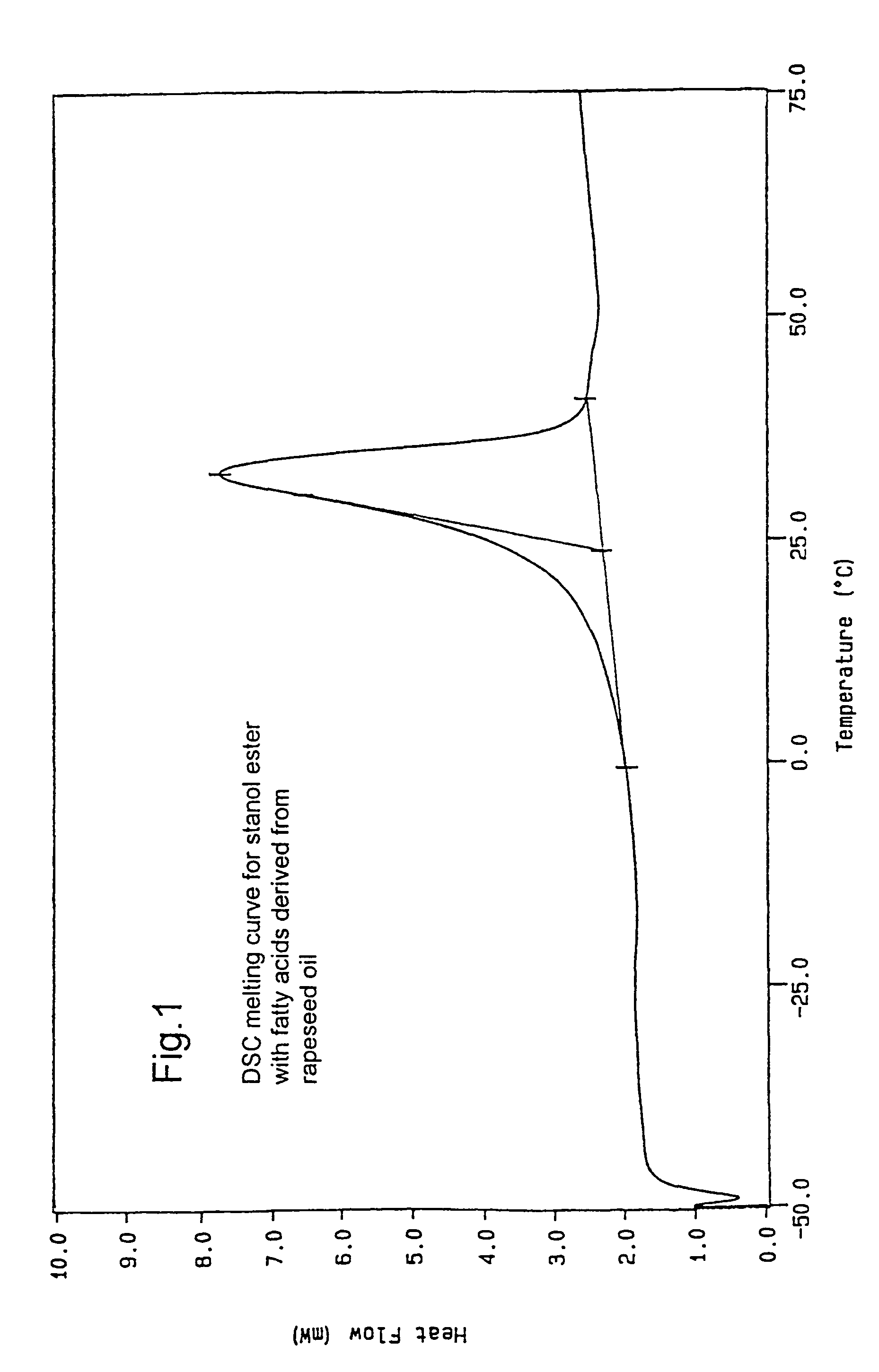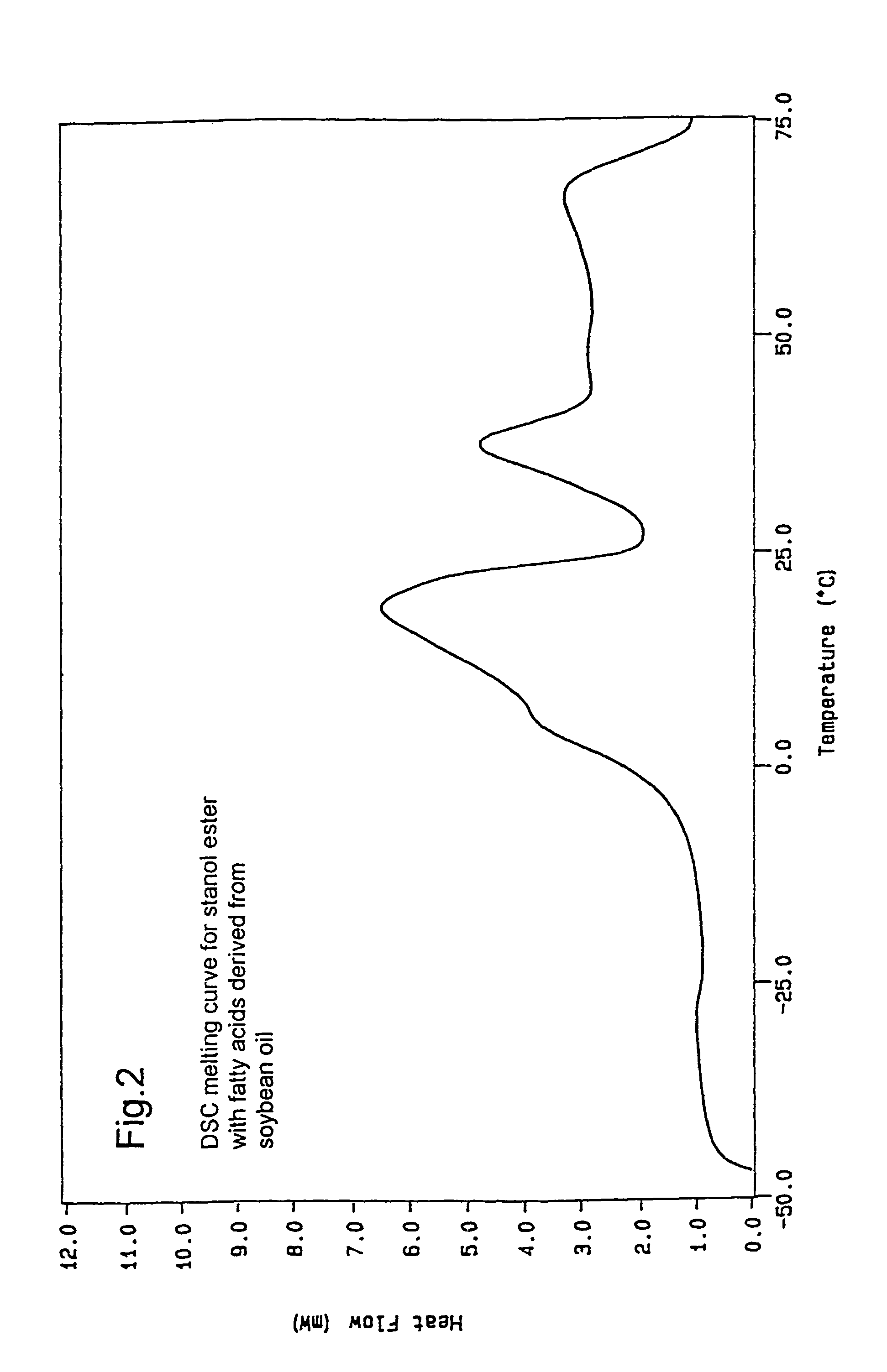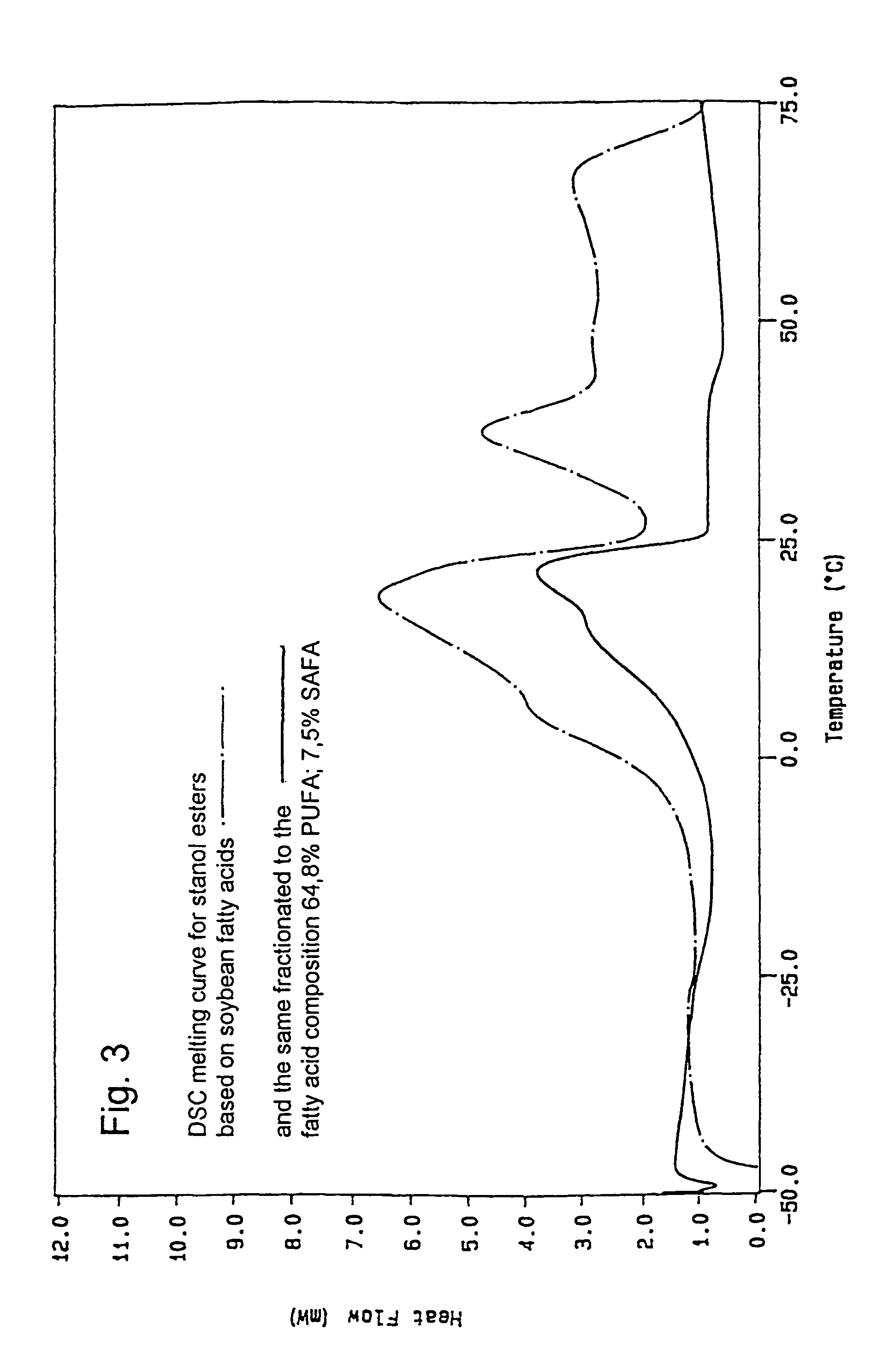Phytosterol compositions
- Summary
- Abstract
- Description
- Claims
- Application Information
AI Technical Summary
Benefits of technology
Problems solved by technology
Method used
Image
Examples
example 1
Preparation of Stanol Fatty Acid Esters Based on Soybean Oil Fatty Acids
[0063]The stanol fatty acid esters were produced in a pilot scale. 6 kg plant stanol (composition: 90% sitostanol, 8% campestanol, 1.5% sitosterol+trace amounts of other unsaturated sterols, obtained by hydrogenation of a commercial tall oil sterol blend (Kaukaus Oy)) was dried for 6 hours at 60° C. in vacuo to remove moisture. The dried stanol was blended with 8,6 kg soybean oil methyl ester mixture and dried at 110-120° C. The temperature of the dry mixture was reduced to 90-95° C. and the sodium ethylate catalyst (21 g) was added. The temperature was increased to 110° C. and the reaction was carried out under vacuum (10-20 mmHg). The conversion was monitored by fast HPLC analysis. Once >98% conversion was achieved, the temperature was reduced to 100° C. and 30 weight-% water or acidified water was added to destroy the catalyst. The water phase was removed and the oily phase was rewashed with water. The oily p...
example 2
Preparation of Tall Oil Based Sterol Fatty Acid Ester Based on Soybean Fatty Acids
[0064]Sterol ester fatty acid esters based on soybean oil derived fatty acids were prepared by the same procedure as outlined in Example 1, except that the stanol was exchanged for an equivalent amount of commercial tall oil sterol blend (Kaukas Oy).
example 3
Preparation of Vegetable Oil Based Sterol Fatty Acid Ester with Fatty Acids Derived from Sunflower Oil
[0065]A sterol fatty acid ester blend with fatty acids derived from sunflower oil was prepared in laboratory scale. 295 g vegetable oil based sterols (ADM: composition: 48.3% sitosterol, 26.4% campesterol 15.2% stiomasterol 2.4% brassicasterol, 2.7% sitostanol, 0.9% campestanol and 4.1% others) was dissolved by heating and use of vacuum in 424 g sunflower methyl esters in a 11 glass reactor equipped with a mechanical stirrer. The blend was dried at 130° C. and a vacuum of <5 mmHg. The temperature of the dried mixture was reduced to 97° C. and 3.6 g sodium ethylate was added. The reaction was carried out at 130° C. under a final vacuum of <5 mmHg. After 4 hours the temperature was reduced to 99° C. and the oily mixture was washed twice with 30 weight-% water. The oily phase was removed and dried at 112° C. under vacuum (<5 mmHg), after which the oily phase was bleached using 2 weight...
PUM
 Login to View More
Login to View More Abstract
Description
Claims
Application Information
 Login to View More
Login to View More - R&D
- Intellectual Property
- Life Sciences
- Materials
- Tech Scout
- Unparalleled Data Quality
- Higher Quality Content
- 60% Fewer Hallucinations
Browse by: Latest US Patents, China's latest patents, Technical Efficacy Thesaurus, Application Domain, Technology Topic, Popular Technical Reports.
© 2025 PatSnap. All rights reserved.Legal|Privacy policy|Modern Slavery Act Transparency Statement|Sitemap|About US| Contact US: help@patsnap.com



